Going to Gers lake from Samoëns
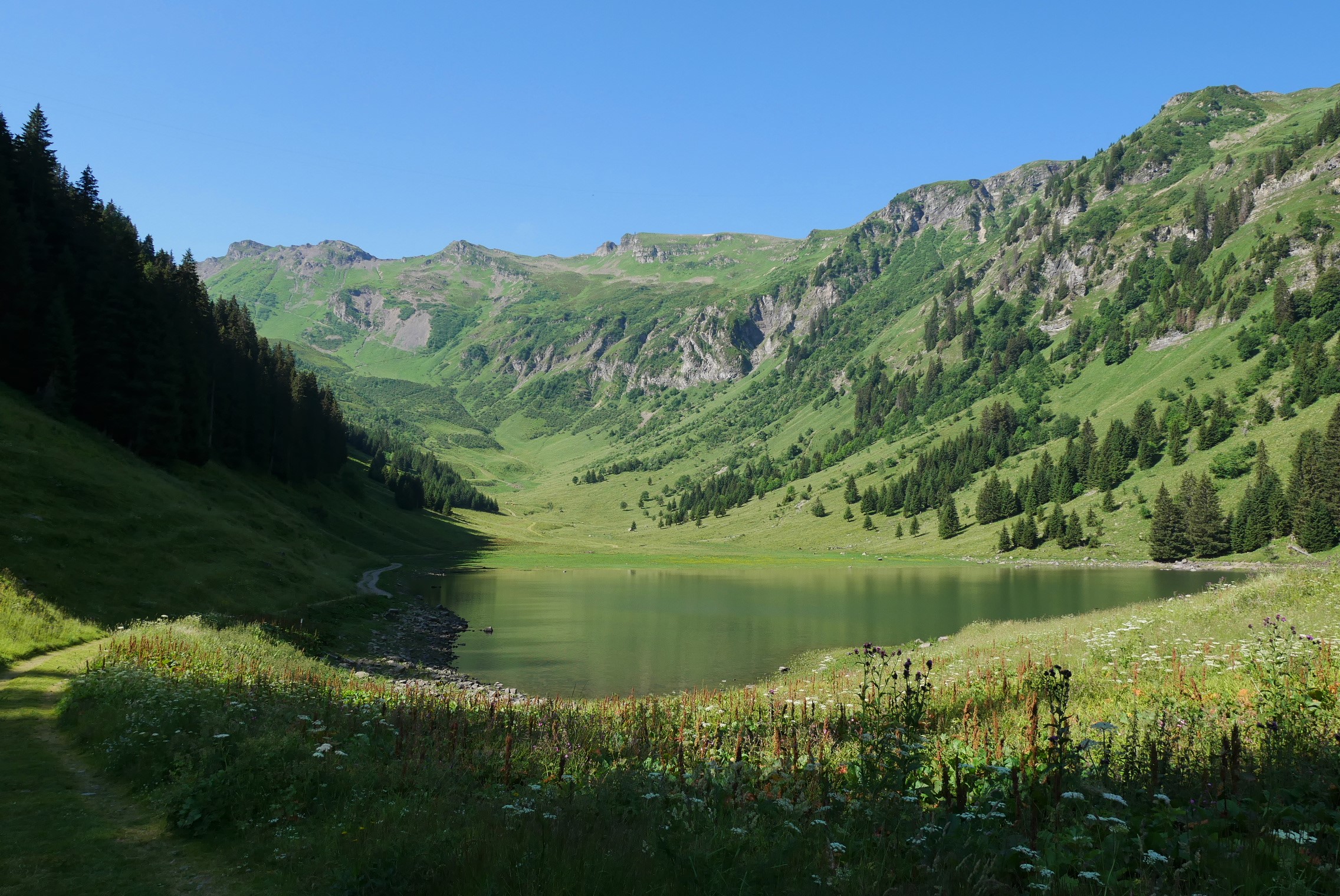
Samoëns
Going to Gers lake from Samoëns
Medium
3h
12,1km
+467m
-464m
Embed this item to access it offline
Come and discover the secrets of mountain lakes and forest management in a comprehensive way. No stonewalling, we promise.
Attachment
- Downloadpdf
lac-de-gers-depuis-samoens
Credit: Points d'intérêts du parcours - Asters-CEN74
5 points of interest

@Asters-CEN74  Fauna
FaunaThe black woodpecker
It is the largest of the 8 woodpecker species found in France. It is a cavernicolous species, meaning that it digs cavities in trees to build its nest and lay its eggs! This is known as a "lodge". These lodges are often reused by other species, known as "host species", whether they be birds, such as the small mountain owls (Little Owl or Tengmalm), or mammals, such as the Pine Marten, a mustelid, cousin of the Weasel. Although this species is not endangered, it is important to keep this bird in mind when doing forestry work (avoid building sites when it is breeding). The depletion of dead wood and senescent trees in forests is threatening its habitat.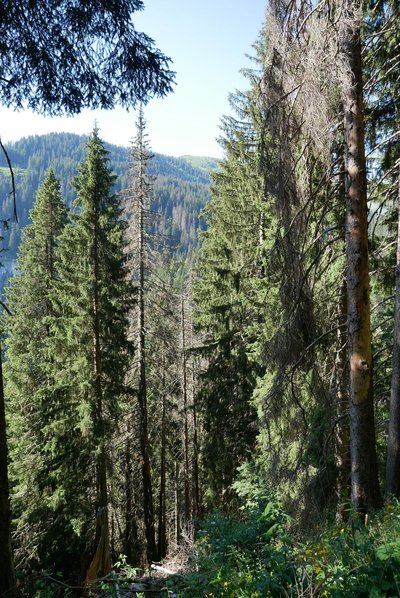
 Flora
FloraDehydrated trees: red colour is a sign of trouble
The effects of climate change, water shortage and repeated droughts are weakening trees, particularly spruces and firs. Despite their ability to gradually adapt to the water shortage, several tree species are increasingly dying out. Trees regulate their transpiration by closing the stomates ("pores") in their leaves, thereby curbing their growth. This closure leads to overheating, which can be fatal for the species. Trees, already weakened by these factors, can no longer fend off attacks from parasites. Certain insects (bark beetles) dig burrows under the bark of spruce trees, feeding on the wood and sap, further exacerbating the death rate with alarming intensity. Attacked trees can be identified by the change in colour of their needles, which turn from green to brown. The rate of migration and adaptation of trees (which live for more than a hundred years) is too slow to keep up with the pace of change. Forest managers are experimenting with planting species that are more resistant to climate change.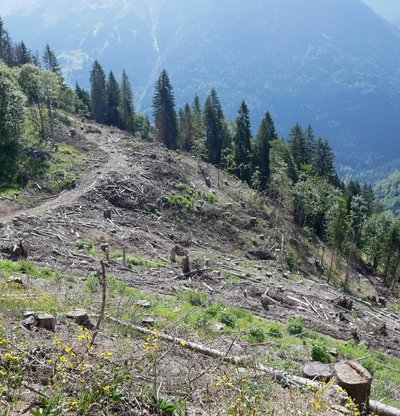
@julietteBuret  Flora
FloraForest management: sanitation cutting
French forests are facing numerous challenges related to climate change, which are affecting their vitality and productivity. To ensure their long-term survival and versatility, management actions are carried out by forestry experts. They are carrying out clear-cuts or sanitation cuts. Although the general public sees these actions as massive deforestation, they are actually necessary in order to : - curb an epidemic of bark beetles (insect pests) that spread over a forest area in a very alarming way. -combat fires that tend to happen in areas with dead dry wood - reuse the precious wood locally (heating, construction, toilet paper, etc.). Each forest is different, and each management decision has to be taken on the basis of a number of parameters: surface area, species, neighbouring forests, global warming, the owner's requirements, the impact on the landscape, the environment or the economy, etc. The decisions to carry out these operations therefore lie with the owners. In France, 75% of forests belong to private owners. The regulations governing forestry joint enterprises and legislation remain unclear, despite requests for logging permits and regional development plans. When you enter a forest on a signposted trail, the absence of any signs (you would have seen the signs in a national forest) means that you are in a private forest.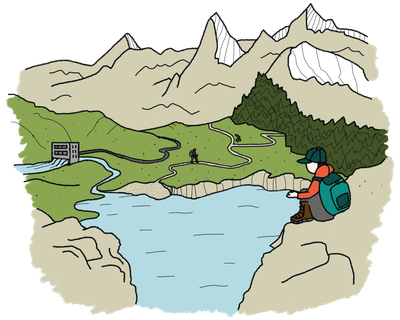
@ClotildeRemusat  Lake
LakeWhat can you do to help protect mountain lakes?
The dangers facing high-altitude lakes are both local and global. At the lakeside, limiting noise pollution or littering is a given in view of such natural splendour. But other positive actions also help to protect the banks and the water. You should avoid treading on the banks by staying on the trails and limit direct pollution of the water (sun cream, or bringing invasive or parasitic species on the buoys). Last but not least, swirling sediment from swimming has a detrimental impact on the flora and fauna of these lakes. The thermal conditions in these environments are extreme, and each species' regrowth cycle is particularly slow. Admittedly, it's a real challenge to dare to swim in a high-altitude lake, but when you swim in a lake too often, you will invariably negatively impact such a beautiful lake. We're counting on you to be thoughtful and help protect these beautiful lakes!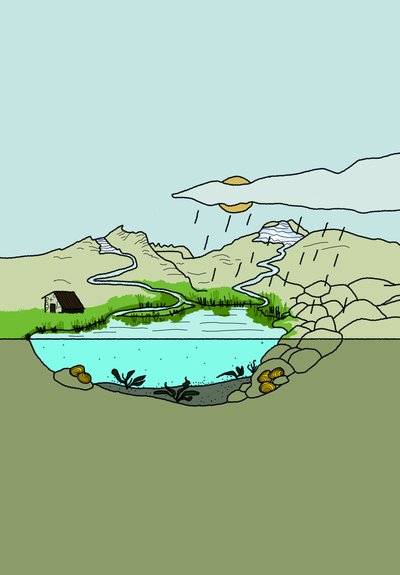
Lacs sentinelles - @ClotildeRemusat  Lake
LakeCan a mountain lake just disappear?
Lakes are evolving ecosystems. They form and then dissolve over a long period of time. In fact, most lakes are bound to fill up and eventually disappear, as a result of slow, gradual processes of sediment deposition. The rate of filling varies from lake to lake. It depends on the amount of sediment input and the nutrient content of the water. Nutrient enrichment of lake water can be accelerated by human activity. Recreational activities such as camping and swimming bring in large quantities of organic matter, which gradually degrades the natural state of the lake.
Description
The hike begins after the Lédedian bridge in Samoëns. Take the forest trail which rises quite steeply to the "Roux" hamlet. Ignore the junctions to the left and stay on the wide trail towards the Porte Chalets, Refuge and Gers Lake. You'll enjoy views of the Criou mountain and the Giffre valley. At the Porte Chalets, you can marvel at Grenier de Commune and Mont Buet. Keep right on the forest path which will take you to the wonderful Gers valley and its alpine pastures. From right to left, you can see the following peaks in front of you: Tête de Véret, Tête de Balacha and Tête Pelouse. Take the same route back to the Pont de Lédédian.
- Departure : "Pont de Lédédian" bridge, Samoëns
- Arrival : "Pont de Lédédian" bridge, Samoëns
- Towns crossed : Samoëns and Sixt-Fer-à-Cheval
Altimetric profile
Recommandations
Always be careful and plan ahead when hiking. Asters, CEN 74 can not be held responsible for the occurrence of any accident or incident on this trail. Stay on the trails! Dogs should be kept on a leash and swimming is not recommended.
Access and parking
Take the D907 road to Samoëns, then head towards Samoens 1600 and the Plateau des Saix. Shortly after passing the Plaigne (Hameau de la Plaigne), take a narrow road on your left towards Lédédian and the Lac de Gers refuge car park. Keep your eyes open as this narrow road can be easily missed.
Parking :
Lédédian parking area, near Pont (Bridge) de Lédédian, Samoëns
Report a problem or an error
If you have found an error on this page or if you have noticed any problems during your hike, please report them to us here:
